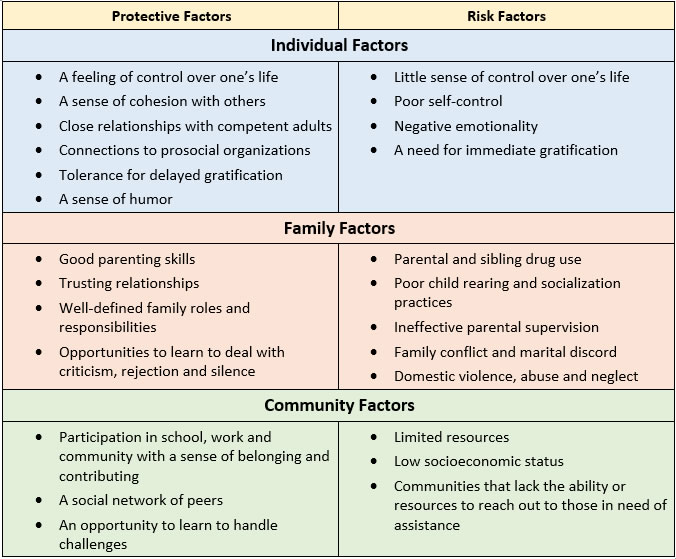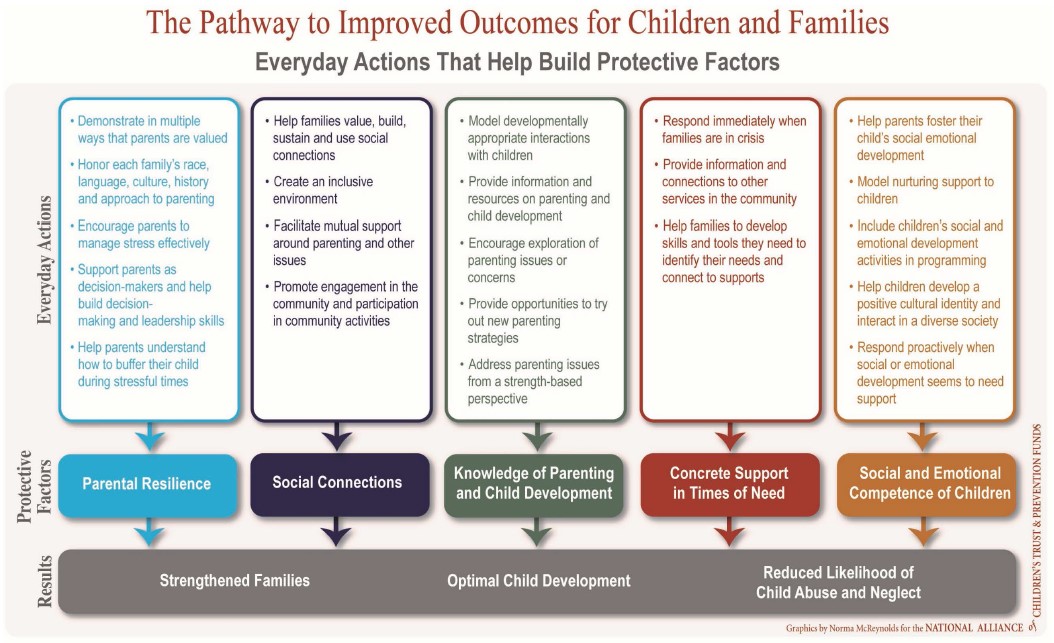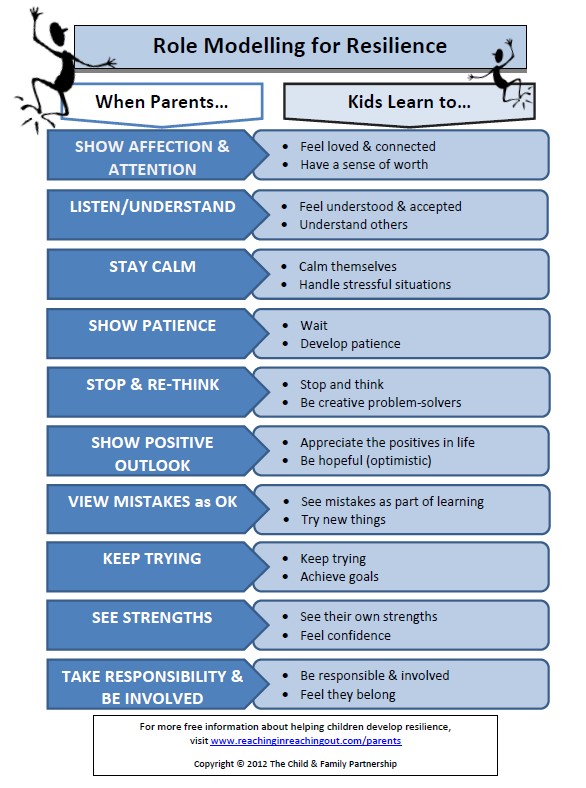It Begins with You
Recovery & Resilience > ResilienceResilience
The mental health and substance use disorder fields have a great deal of literature that references building, enhancing and activating resilience in individuals at risk for and with mental and/or substance use disorders. Many of these studies focus on how children and adolescents develop resilience, since the process of building it begins at a very early age. Resilience is dependent on individual, family, and community factors. It is supported by protective factors, which enhance one’s ability to “bounce back,” and is reduced by risk factors, which put an individual in jeopardy of developing a mental or substance use disorder, or otherwise not recovering from a challenging event such as a natural disaster. Although a single protective or risk factor may not impact a person’s resilience, a combination of risk factors can overwhelm an individual and make it difficult to cope. Several protective factors, on the other hand, can bolster a person’s ability to handle challenging circumstances. The table below shows examples of protective and risk factors. Table: Examples of Protective and Risk Factors Affecting Resilience
Strengthening Families
The Center for the Study of Social Policy developed their own framework for looking at the protective factors that can help to strengthen families and in turn build up their children’s ability to cope with life challenges. The five protective factors, as shown in the diagram below, are parental resilience, social connections, knowledge of parenting and child development, concrete support in times of need, and social and emotional competence of children. By taking the “everyday actions” shown in the larger boxes, the result will be strengthened families, optimal child development, and reduced likelihood of child abuse and neglect.
Role modeling for resilience
The Child and Family Partnership outlined how parents can be role models for resilience in their children. For example, when parents show attention and affection, kids learn to feel love and connected, and they have a sense of self worth. Other parental behaviors and their impact on children are shown in the figure below.
Resilience is dynamic and interactive
More recent research has shown:
- Resilience is the result of a dynamic interaction between a person’s biology and their external experiences (National Scientific Council on the Developing Child, 2015). Resiliency is affected by the way the brain, immune system and genes respond to experiences during a person’s development. This has to be considered when trying to understand why some children have unexpectedly positive outcomes despite adversity. Such variations are because the brain circuitry interacts with the caregiving environment and social context. Biological differences may explain why some babies or children are more sensitive to stressful experiences.
Resilience is dynamic through the lifespan (Herrman, et al, 2011). It is affected by personal experiences, social circumstances, culture and the political environment, in addition to inherited or biological factors. Stressors may appear later in life, such as poor relationships, negative life events, war or natural disasters, and these may affect ones’ ability to adapt.



